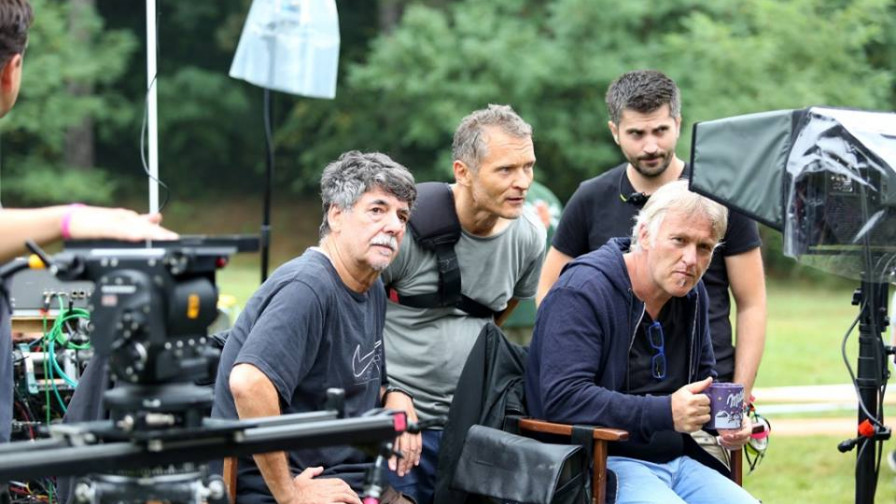Gábor Herendi: 'This year will be a turning point for Hungarian cinema'
With its budget of nearly three billion Hungarian forints, Kincsem is the most expensive Hungarian movie ever made. Are you proud of the fact or does it weigh on you?
It kind of weighed on me during pre-production, but not in a bad way. I just felt the responsibility of doing something this big and people having high expectations for it. Now that the film is ready and the first reviews are out, I am mostly proud, because I feel that we managed to live up to those expectations. We had a test screening when the film was still half-finished, and it scored 93% with the test audience, which, I am told, is a fantastic result.
How many movie admissions do you expect?
I can’t really guess, it’s hard to tell, because the situation is not exactly great, Hungarian moviegoers still don’t like Hungarian films that much. But I think this year will be a turning point: so many Hungarian films will be released, it will be impossible not to bump into them, and I think many of them will be very good and also entertaining. If many entertaining, mainstream movies are made, they will also draw the people towards more artistic fare.
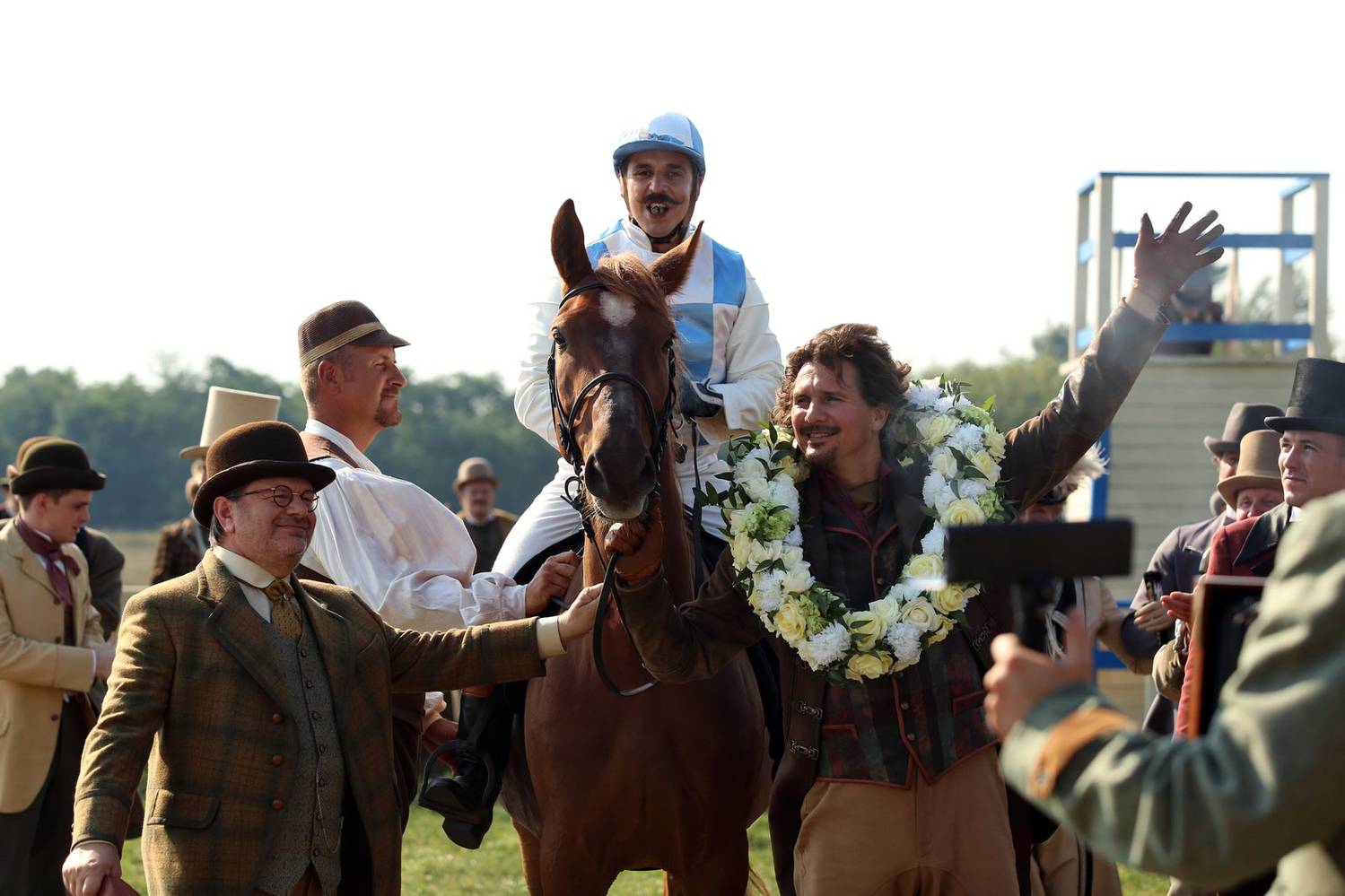
József Gyabronka, Lehel Kovács, Ervin Nagy (Picture: Adrienn Szabó)
Hungarian movies which were meant to be mainstream, didn’t manage to attract huge audiences during the last few years. Do you, as a director of movies that succeeded in attracting large numbers of people, have any tips for doing things differently?
One thing is certain: the Hungarian film industry produces more auteur films, than mainstream movies, most of the directors are interested in auteur cinema, and this is also mostly what they teach at the University of Theatre and Film Arts. Not many filmmakers experiment with different genres, not many mainstream movies are getting made, while mainstream Hollywood movies of all genres are flooding the market, and Hungarian films have to compete with them. I know that the Film Fund doesn’t receive that many mainstream film scripts either. If more mainstream movies were made, it would probably draw people back to movie theatres.
Does it even make sense to try and make mainstream Hungarian films, when it’s so hard to compete with Hollywood?
I think it does. Audiences were disappointed with many Hungarian movies, but they still love comedies and they still like to see their own actors up on the screen. I don’t think that Hollywood comedies fulfill this need, and there’s no need for domestic ones. Every country has its own comedies. But they have to be good.
Your first feature film, A Kind of America was released exactly fifteen years ago. Do you think audience expectations have changed a lot since then?
I think the most important change is that young viewers have a very different aesthetic now, which they may have in common with young directors. There are some interesting experiments, like the movies #Sohavégetnemérős and Tékasztorik. What has definitely changed is the pace. It became just as fast as our lives. Internet and social media has such a huge influence on how young people think and what they like, if filmmaking doesn’t keep up, we won’t be able to communicate with them.
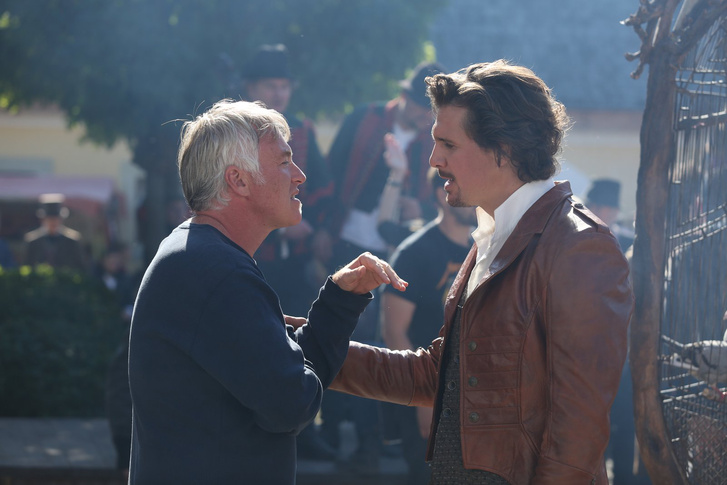
Gábor Herendi and Ervin Nagy at the shooting of 'Kincsem' (Picture: Adrienn Szabó)
Were you thinking about this when you made Kincsem?
Absolutely. Of course Kincsem had to adhere to the rules of its genre to a certain extent, it is after all a period movie, which is not at all trendy these days. I was worried that people had strong preconceptions about the genre, and I would have to dismantle those somehow. So we made an exciting, fast-paced movie, and we tried to create images that were very 21st century, in spite of the fact that it is a period piece.
Did you also consciously use the anachronistic elements to freshen up the genre?
Some of these were made up as we went along, but it’s definitely not my innovation, many films made use of this tool before, Guy Ritchie’s Sherlock Holmes being one great example. I just followed this path. But I didn’t want to use these elements in the film like decorations on a Christmas tree, I only used it sparingly, so as not to distract from the story.
You had been developing the script for years with Bálint Hegedűs. What changed during this time?
We turned the main character, Blaskovich, played by Ervin Nagy, into a bit of a scoundrel. In the original version he was already quite nice at the beginning of the movie, and we turned him into a drunk, womanizing guy who burns the candle at both ends. This is logical in a dramaturgical sense, because this way he can have a character arc, with Kincsem and the girl taming him, and vice versa. There were also some changes made for budgetary reasons, for example we cut out a battle scene, because it would have cost a fortune, and we still couldn’t have made a scene that would have compared to the ones in Hollywood movies. And the viewers wouldn’t have forgiven us for that. It doesn’t work like “oh, it’s only a Hungarian movie, so it’s okay”.
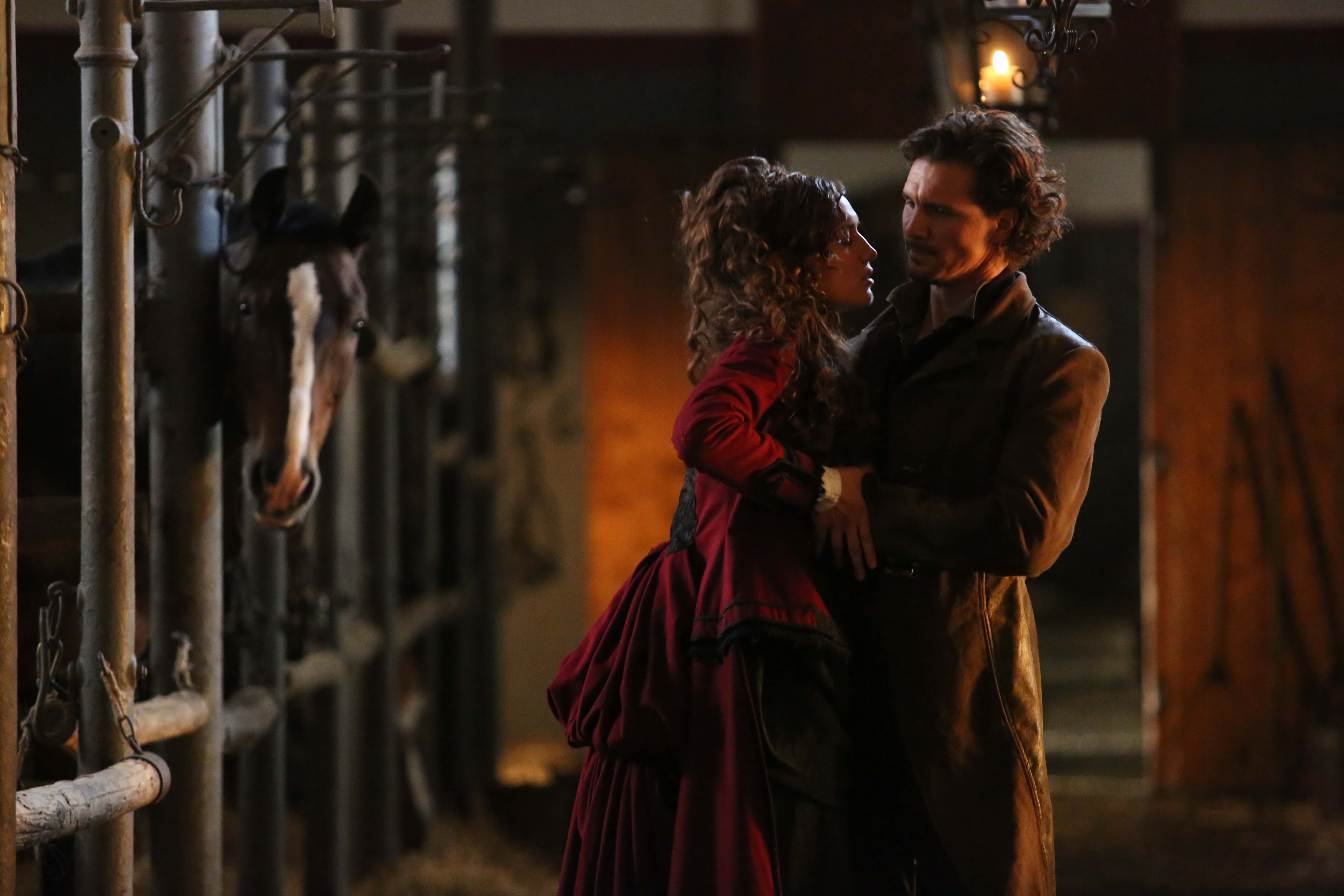
Andrea Petrik and Ervin Nagy (Picture: Adrienn Szabó)
I had been worried about exactly this with the horse race scenes, but I was pleasantly surprised, because they were effective both dramatically and visually. How did you prepare for these? Did you steal tricks from other movies?
Yes. There are a few horse movies in the world, like Seabiscuit, Secretariat and War Horse by Steven Spielberg. I managed to get my hands on the behind the scenes footage shot on their film shoots from an American guy, who collects these, and when I watched them I kind of fell apart. The problem is that horses run at a speed of 80 kilometers per hour, and if they don’t run as fast as they can, it doesn’t look real. But there is no concrete next to the racing track for the camera to run on, it has to run on an uneven, grassy field, and that shakes it to death. On the Seabiscuit shoot they used a gyroscopic head, which was developed by NASA, and it totally stabilizes the frame. It turned out that this was available in Hungary too, but I didn’t know that, and I was already planning what to write to NASA. The technology developed so much through the years, that the same tools were available to us, and even more advanced ones actually. We could immerse the audience more in the horse races, because nowadays there are high-quality cameras that are so small, it’s possible to attach them to special surfaces.
You like to emphasize the importance of auditions. Did your two lead actors, Ervin Nagy and Andrea Petrik also have to go through the process?
Yes, but these days it’s not a foreign concept for actors anymore. There are still a few older actors, who don’t understand why they have to come in to read, when I know them and what they are capable of, but of course it doesn’t work like that. I have to see whether a role fits an actor. I believe in auditions, even though no one likes them, not even me. For this film we had to find the male protagonist first, then the female, and then we had to see whether they work together. It took several rounds until it became clear that Ervin could pull of that macho, manly character we needed, and that he understood exactly what I wanted: to act with absolutely no pathos whatsoever, even though the dialogues could have suggested it. The same was true for Andrea, and fortunately the chemistry was also there between them straight away.
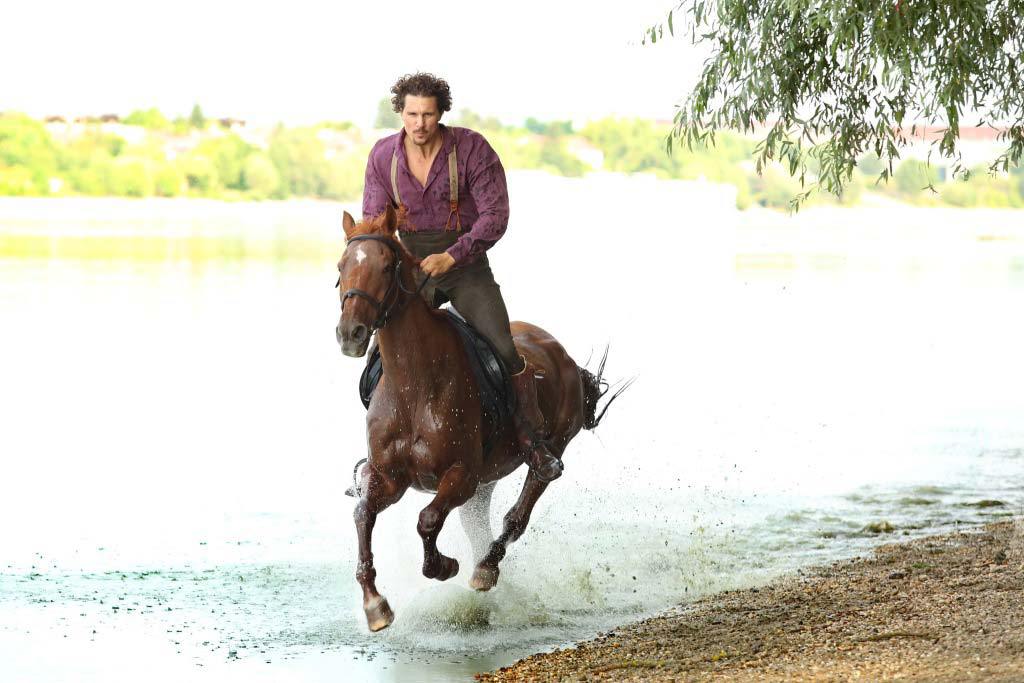
Ervin Nagy riding a horse (Picture: Adrienn Szabó)
If I’m not mistaken, you asked Ervin Nagy to lose weight.
I told him this was not a game, he had to look great. We weighed him and put it in his contract that he had to weigh 10 kilos less on the first day of the shoot. In the end he even overdid it, I think he lost 12 kilos, and he is very happy about it, because he does look great in the movie, even when he takes his shirt off.
What was the hardest part of the production?
The CGI, which is a very complex process, and I haven’t made a film before that needed it on such a big scale. For example, only one-sixth of the bleachers were built, but I had to compose the frame imagining the whole thing, and that was a bit tough. I always had doubts about whether it would work, and I kept nagging the poor CGI supervisor, asking “are you sure you will be able to pull this off?”.
Was this the most expensive item in the budget?
CGI is not cheap, but the sets and the costumes were even more expensive, not to mention the horses. It’s not possible to borrow a race horse to shoot a film, so we mostly rented older ones that weren’t running races anymore. We worked with about a hundred horses, because they tire quickly, so you have to swap them out in about every one and a half hours.
National pride in relation to the successes of the horse is a strong element in the movie, and the film also premieres on March 15th, the anniversary of the 1848 revolution in Hungary. Do you feel national pride?
Why wouldn’t I? But I don’t overdo it. I feel that national pride appears in the film tastefully, to the extent that it should be there. After all Kincsem is still the most famous and most successful horse in the world, and I think it is natural to be proud of that. But I certainly didn’t want to get carried away. I am fairly certain that some people will find even this much national pride way too much, whereas others will feel it is way too little.
Bori Bujdosó
